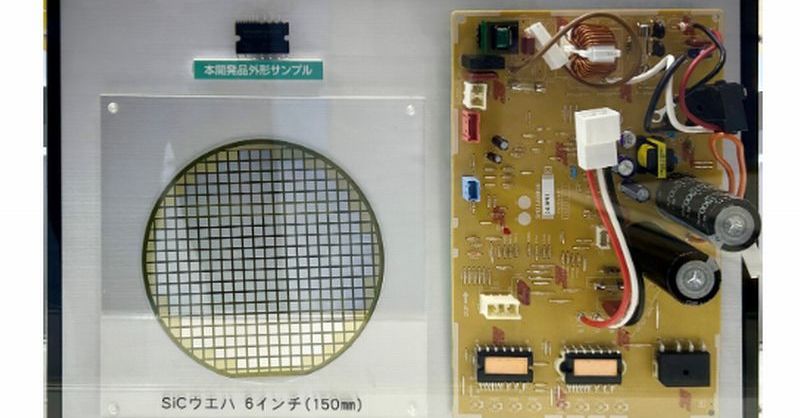Energy-Saving ACs: Revolutionizing Cooling with SiC & Si Chip Parallel Technology
The global quest for sustainable energy solutions is pushing innovation across various sectors, and the air conditioning industry is no exception. Traditional air conditioners are notorious energy guzzlers, contributing significantly to carbon emissions. However, a groundbreaking advancement utilizing SiC (Silicon Carbide) and Si (Silicon) chip parallel technology is poised to revolutionize cooling, offering significant energy savings and improved efficiency. This article delves into the details of this exciting development and its potential impact on the future of air conditioning.
What is SiC & Si Chip Parallel Technology?
This innovative technology combines the strengths of Silicon Carbide and Silicon chips in a parallel configuration within the AC's power inverter. Let's break down the individual contributions:
-
Silicon Carbide (SiC): SiC is a wide-bandgap semiconductor known for its superior high-temperature and high-voltage capabilities. In AC inverters, SiC MOSFETs (Metal-Oxide-Semiconductor Field-Effect Transistors) enable higher switching frequencies and lower switching losses compared to traditional silicon-based MOSFETs. This translates directly to enhanced efficiency and reduced energy consumption.
-
Silicon (Si): While SiC handles the high-voltage aspects, silicon chips excel in processing and control. By employing a parallel architecture, the Si chips manage the intricate control algorithms necessary for optimal performance and seamless operation of the AC unit. This intelligent control system maximizes the benefits of the SiC MOSFETs, leading to even greater energy efficiency.
The Synergy of Parallel Processing
The parallel arrangement of SiC and Si chips is crucial. The SiC chips handle the power conversion with minimal losses, while the Si chips ensure precise control and monitoring, preventing overheating and optimizing energy use in real-time. This synergistic approach creates a highly efficient and reliable system.
Energy Savings and Environmental Impact
The benefits of this technology are significant:
-
Reduced Energy Consumption: Studies indicate that AC units employing SiC & Si chip parallel technology can achieve energy savings of up to 30-40% compared to traditional units. This translates to lower electricity bills for consumers and a reduced carbon footprint.
-
Lower Carbon Emissions: By significantly cutting energy consumption, these energy-saving ACs contribute to a reduction in greenhouse gas emissions, combatting climate change.
-
Improved Efficiency: The higher switching frequencies and reduced losses result in improved overall efficiency, leading to longer lifespan and lower maintenance costs.
-
Smaller and Lighter Units: The increased efficiency often allows for smaller and lighter AC units, benefiting both manufacturing and installation.
The Future of Cooling: Market Trends and Adoption
The adoption of SiC & Si chip parallel technology is steadily gaining momentum. Several leading air conditioning manufacturers are actively incorporating this technology into their new models. The market for energy-efficient ACs is booming, driven by growing environmental concerns and increasing energy costs.
Challenges and Opportunities
While this technology offers immense potential, some challenges remain:
-
Cost: Currently, SiC chips are more expensive than traditional silicon chips, making the initial cost of these ACs higher. However, as production scales up, the price is expected to decrease.
-
Supply Chain: Ensuring a stable and reliable supply chain for SiC materials is critical for widespread adoption.
Despite these challenges, the long-term benefits of reduced energy consumption and environmental impact outweigh the initial cost considerations. The future of cooling is undoubtedly heading towards more sustainable and efficient solutions, and SiC & Si chip parallel technology is paving the way.
Conclusion: A Cool Revolution
SiC & Si chip parallel technology represents a significant leap forward in air conditioning technology. By offering substantially improved energy efficiency and reduced environmental impact, it promises a cooler, greener future. As the technology matures and costs decrease, we can expect to see its widespread adoption, transforming the air conditioning industry and benefiting both consumers and the planet. Stay tuned for further advancements in this exciting field!
Keywords: Energy-saving ACs, SiC, Silicon Carbide, Si, Silicon, parallel technology, energy efficiency, air conditioning, sustainable energy, green technology, climate change, cooling technology, MOSFETs, inverter technology, energy savings, carbon emissions, environmental impact, AC inverter, efficient AC.
